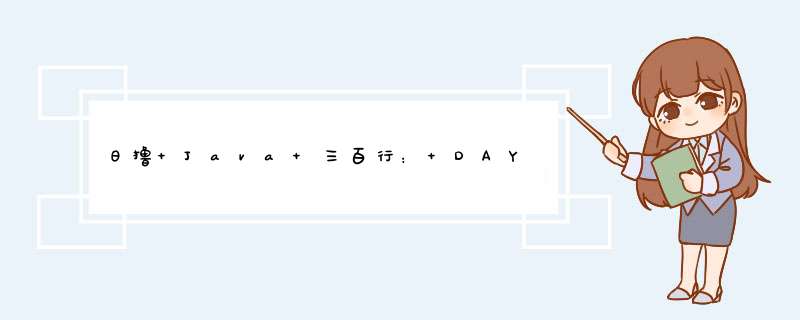
今天实现LinkedQueue类,包括一个内部类,以及几个方法。
1.链队列队列同栈一样,也是一种受限的表结构,它只能在表的一端插入结点,在另一端删除结点,这两个 *** 作分别被称作入队和出队。队列的特性是FIFO,即先进先出。所谓链队列,就是指存储方式为链式存储的队列。
2.程序1.实例域
LinkedQueue类含有几个实例域,包括一个内部类,一个头结点引用和一个尾结点引用。
内部类包含一个用于存储数据的int型变量,一个用于链接下一个结点的引用和一个构造器,它定义了链表的结点结构。
头、尾结点的引用是为了方便进行入队和出队 *** 作。
/**
* An inner class.
*/
class Node {
/**
* The data
*/
int data;
/**
* The reference to the next node.
*/
Node next;
/**
*****************
* The constructor
*
* @param paraValue The data.
*****************
*/
public Node(int paraValue) {
data = paraValue;
next = null;
} // Of the constructor
} // Of class Node
/**
* The header of the queue.
*/
Node header;
/**
* The tail of the queue.
*/
Node tail;
2.构造器
构造器用于初始化一个空队列。
/**
*****************
* Constructor an empty sequential list.
*****************
*/
public LinkedQueue() {
header = new Node(-1);
// header.next = null;
tail = header;
} // Of the first constructor
3.enqueue
enqueue是队列最常用的 *** 作之一,它在队尾插入一个新的结点。
/**
*****************
* Enqueue.
*
* @param paraValue The value of the new node.
*****************
*/
public void enqueue(int paraValue) {
Node tempNode = new Node(paraValue);
tail.next = tempNode;
tail = tempNode;
} // Of enqueue
时间复杂度: O ( 1 ) O(1) O(1),因为有尾结点引用,可以直接定位到尾部进行插入
4.dequeue
dequeue也是队列的常用 *** 作,它将队头结点出队,并将该节点的值返回。值得注意的是,出队之前需要先判断是否队空,若已经队空,那么是不能出队的。
/**
*****************
* Dequeue.
*
* @return The value at the header.
*****************
*/
public int dequeue() {
if (header == tail) {
System.out.println("No element in the queue.");
return -1;
} // Of if
int resultValue = header.next.data;
header.next = header.next.next;
// The queue becomes empty.
if (header.next == null) {
tail = header;
} // Of if
return resultValue;
} // Of dequeue
时间复杂度: O ( 1 ) O(1) O(1)
5.toString
toString将队列中的元素转为其对应的字符串形式。
/**
*****************
* Overrides the method claimed in Object, the superclass of any class.
*****************
*/
public String toString() {
String resultString = "";
if (header.next == null) {
return "empty";
} // Of if
Node tempNode = header.next;
while (tempNode != null) {
resultString += tempNode.data + ", ";
tempNode = tempNode.next;
} // Of while
return resultString;
} // Of toString
时间复杂度: O ( n ) O(n) O(n),因为要遍历整个队列
6.测试
测试代码如下
/**
*****************
* The entrance of the program.
*
* @param args Not used now.
*****************
*/
public static void main(String args[]) {
LinkedQueue tempQueue = new LinkedQueue();
System.out.println("Initialized, the list is: " + tempQueue.toString());
for (int i = 0; i < 5; i++) {
tempQueue.enqueue(i + 1);
} // Of for i
System.out.println("Enqueue, the queue is: " + tempQueue.toString());
tempQueue.dequeue();
System.out.println("Dequeue, the queue is: " + tempQueue.toString());
int tempValue;
for (int i = 0; i < 5; i++) {
tempValue = tempQueue.dequeue();
System.out.println("Looped delete " + tempValue + ", the new queue is: " + tempQueue.toString());
} // Of for i
for (int i = 0; i < 3; i++) {
tempQueue.enqueue(i + 10);
} // Of for i
System.out.println("Enqueue, the queue is: " + tempQueue.toString());
} // Of main
执行结果如下
- 链队列出队时需要考虑是否队空
- 当队列已空的时候,要把tail重新指向header
- toString方法会多打印一个逗号,如果将while里的判断条件改一下,对最后一个结点单独处理,就不会这样了,如下所示
if (header.next == null) {
return "empty";
} // Of if
Node tempNode = header.next;
while (tempNode != null && tempNode.next != null) {
resultString += tempNode.data + ", ";
tempNode = tempNode.next;
} // Of while
resultString += tempNode.data;
执行结果如下:
可以看到,这样就不会在末尾多一个逗号了。
欢迎分享,转载请注明来源:内存溢出

 微信扫一扫
微信扫一扫
 支付宝扫一扫
支付宝扫一扫
评论列表(0条)